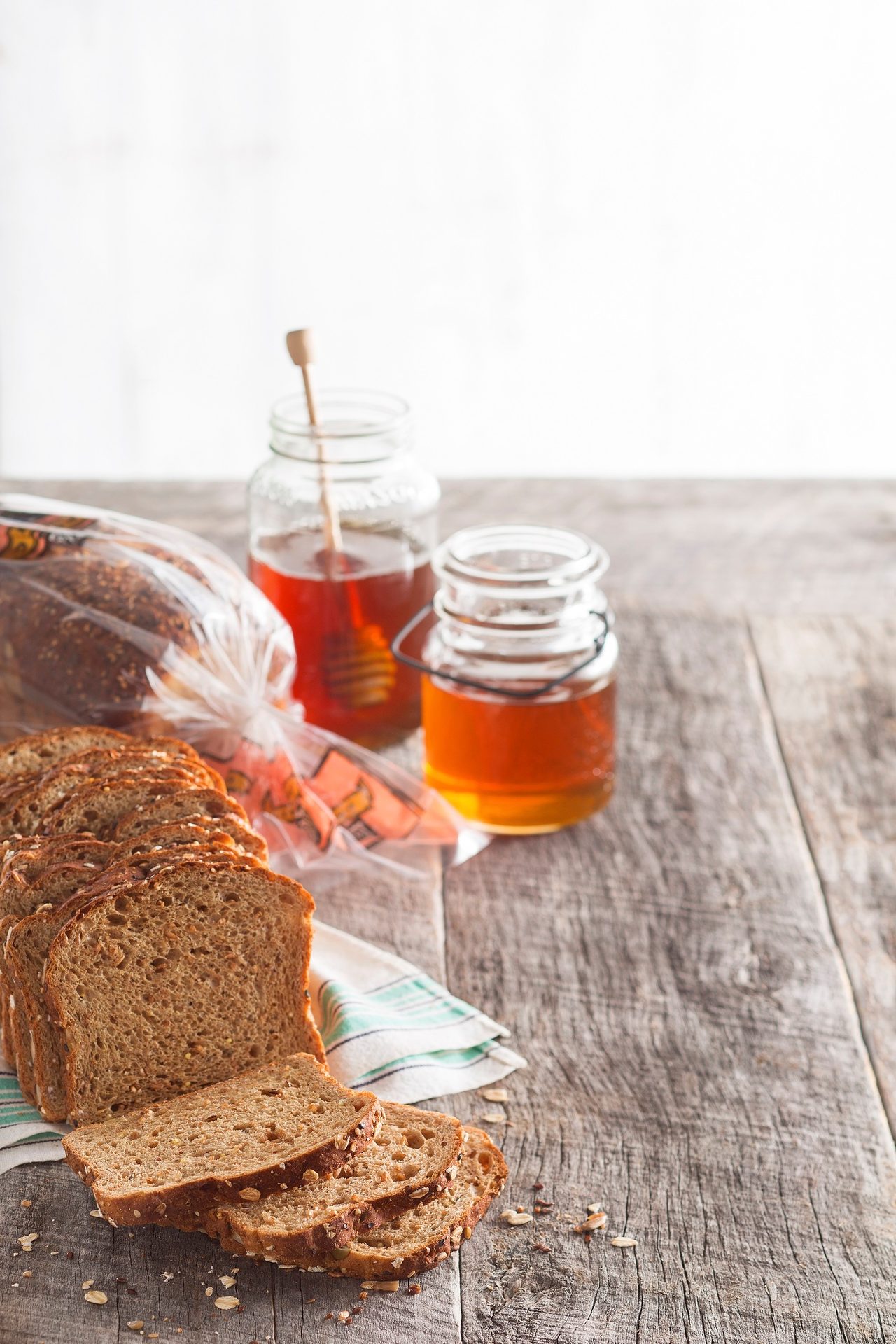Fats and oils
ingredients
The BOTTOM LINE
- Consumers want lower-sugar snacks and baked products.
- Balancing flavor, texture, and experience with lowered sugar is tricky
- Honey’s popularity is increasing, thanks to its clean-label status
Fine-tuning fats and oils
Snack and bakery consumers want to balance health and indulgence; the right ingredients can deliver.
Joyce Friedberg, Contributing Writer
Consumers are being more mindful of their health and wellbeing. More than half of consumers are closely monitoring the fats and oils in the foods they buy, and the amount of fat is an important consideration in consumers' purchase decisions, according to Cargill’s proprietary FATitudes research. The study (conducted in 2022) also noted that 72% of consumers say they check the ingredient lists to avoid trans fats, and a similar number (68%) aims to avoid saturated fats, suggesting that consumers recognize these choices may be less healthful.

SPONSORED BY
Improving fat profiles
Cargill uses a structured approach to help manufacturers improve the fat profile of their products. “Typically, we approach the opportunity by using fortification, increasing desirable traits, or lowering properties of concern like saturated fat content, explains Dr. John Satumba, PhD., global bakery technical lead and regional R&D director for North America, global edible oil solutions, Cargill. The company can look at finding a fat or oil with a lower saturated fat content. In applications where a liquid oil with high stability is desired and applicable, the company offers solutions such as their high oleic canola or high oleic sunflower oils (subject to market availability).
“In formulations that require more structure, we can create blends, combining a hard fat with liquid oils that contain lower levels of saturated fat,” Satumba adds. “In some cases, we can address a customer’s request using multi-ingredient system innovation. This allows us to leverage other ingredients to provide some of the key functionality traditionally provided by a fat. For example, protein and fiber can add emulsifications and body, respectively. As an added benefit, these ingredients also add nutritional value to the finished product. We see many opportunities to increase innovation around the entire system, not just the individual oils.”
“High oleic oils are largely new varieties of traditional oils produced through breeding or biotechnology specifically modified to contain high levels of the monounsaturated oleic acid.”
— Frank Flider, oils consultant, United Soybean Board


Courtesy of National Honey Board
Catherine Barry, vice president of marketing, National Honey Board, Erie, CO notes that using a natural sweetener is the cost of entry, and consumers are starting to understand there is a difference in how natural sweeteners are made. With honey, bakers and snack food manufacturers are using an ingredient made by bees in a beehive. Purchasing products with honey helps support beekeepers in their efforts to maintain healthy honeybees. It also adds an emotional element to the purchase of a product made with honey; combine that with a flavor that everyone loves, she says, and you have a powerhouse sweetener that can enhance any bakery or snack food formula.
“Although honey has been around for thousands of years, its growing use in snack foods and baked goods has led to innovative new uses. In food bars, product developers are using honey as a clean label sweetener that binds ingredients,” explains Barry. “This multi-functional use allows food manufacturers to reduce the amount of ingredients used and ensure their ingredient listing is clean. In bread formulations, bakers are taking advantage of honey’s humectancy to ensure their crumb stays moist longer. Honey also performs exceptionally well as a flavor-masker in gluten-free formulas that use non-traditional flours that may carry off flavors.”
“The use of high oleic oils and shortenings in baking and snacks has been successful in many applications such as pastries and other baked goods, although these ingredients have been around for only a short period of time, explains Frank Flider, oils consultant, United Soybean Board. “High oleic oils are largely new varieties of traditional oils produced through breeding or biotechnology specifically modified to contain high levels of the monounsaturated oleic acid. Nutritionally, high oleic soybean oil has an improved fat profile, lower saturated fat and three times the amount of beneficial monounsaturated fatty acids when compared to conventional vegetable oils. High oleic soybeans produce an oil with a modified fat profile comprised of approximately 75% oleic acid, 8% linoleic acid, 2% alpha-linolenic acid, and 12% saturated fats.”
In addition, “high oleic acid delivers enhanced functional benefits, including superior high heat stability, and extended shelf life,” states Flider. One of the many reasons there is growing interest in high oleic soybean oil in particular is due to its resistance to oxidation—providing extended shelf life for package products and fresh baked goods. High oleic soybean oil also provides increased high-heat stability, which makes it perfect for a variety of baking applications, including donut frying.”
Bakers and snack producers will continue to see the nutrition of their products as well as the sustainability of their ingredients as items of interest from their consumers, shares Roger Daniels, vice president research, development, innovation, and quality at Stratas. “Due to its high unsaturated fatty acid profile, soybean oil meets the need for an improved nutritional profile when compared to conventional shortenings. Our ‘non-hydro” lineup of products results in finished goods with a significantly lower amount of saturated fats along with increased concentrations of omega-3s and omega-6s.”
Sunflower oil is trans-fat free, low in saturated fat, and non-GMO, qualities that appeal to consumers. “Sunflower oil can also be blended with other fats and oils to help improve the nutritional profile of snack and bakery products,” states John Sandbakken, executive director of the National Sunflower Association. Sunflower oil has a neutral flavor. It is being used in keto breads, vegan and gluten-free desserts, and many new salty snack options made with pea protein and alternative grains. Sunflower oil is also suited for salty snacks such as chips and puffs, and is also an excellent oil to use in snack and protein bars. For bakery products, sunflower oil is a good choice for muffins, quick breads, and desserts that call for liquid oils.”

Courtesy of United Soybean Board
New fats, oils, and shortenings
Peter Hyde, corporate chef, Catania Oils, notes that “the shortening industry is getting more product specific when producing shortenings for products. Shortenings are being specifically designed for specific applications; examples would be laminated doughs, tortillas, and specialty cream filling.” The company took advantage of these trends and added three shortenings, which are new products for Catania Oils.
Catania products are made from sustainable palm oil and do not contain fully hydrogenated oils, the products have zero grams of trans fat per serving and are RSPO-certified.
- Catania All Purpose Palm Shortening
- Wide plastic range for ease of mixing
- Works in all frying applications
- Great for cookies, flaky pie crusts, etc.
- Catania Cake & Icing Shortening
- Great functionality for cakes and icing
- Moist cake with great crumb structure
- Creamy icing with lots of volume
- Catania Heavy Duty Fry Shortening
- Formulated to reduce oil absorption
- Superior glaze and icing adhesion
- Quick glaze and icing set up time
- Can be used for all fried foods (i.e., donuts, fritters, etc.)
A few years ago, Cargill launched its PalmAgility line that was designed specifically for bakery applications. The line was designed to deliver performance over a wider temperature range than standard palm- based options. The company has continued to track consumer needs and has recently expanded their product line with new PalmAgility icing shortenings. According to Satumba, these new shortenings were created to achieve consistent and reliable performance over a wide temperature range.
- PalmAgility 507: is formulated specifically for ready to use icings that are essential to in-store bakeries and other fresh bakery outlets
- PalmAgility 516: works well in a variety of applications, including those that require freeze-thaw tolerance (i.e., where cakes are frozen and then thawed for retail sale)

Courtesy of Cargill
Compared to standard palm-based shortenings, Satumba says, these products have a creamier texture, reduced brittleness, and broader plasticity range, resulting in smooth spreadable icings that are easy to use, even when the icing has been in cold storage.
Stratas has been actively commercializing products in the non-hydrogenated soybean space to meet an array of bakery industry needs. The products are anchored by the company’s all-purpose, non-palm, and non-hydrogenated shortening. The non-hydrogenated shortening line yields excellent performance in a wide range of baking applications including breads, pies, cakes, cookies, and rolls.
“In addition to our all-purpose line, we have a ‘non-hydro’ icing shortening product,” shares Daniels. “This functional shortening has a significantly wider temperature tolerance, enabling bakers to use the finished icing product at colder temperatures. Cake decorators can use icing/frosting made with our non-hydro shortening direct from the container without warming to room temperature.”
Benexia chia oil has launched new collaborations this past year including Cucina and Amore branded 100% chia oil and a 50/50 blend of cold pressed olive oil and chia oil. Wendy Bazilian, DrPH, RDN, U.S. nutrition and health strategy consultant, Benexia, shares multiple benefits of chia oil:
- Chia oil has the highest concentration of essential ALA omega-3 fatty acids among the plant-based cooking oils—63% of the total fat is omega-3 ALA
- Chia oil is cold-pressed from 100% pure chia seed, and the temperature is kept at low levels throughout the entire process to preserve phytonutrients like phenolic acids, tocopherols, and phytosterols, plus its nutty flavor. No chemical solvents or diluents are used
- Chia oil’s smoke point is 420°F, as verified by stability testing
- Chia seeds are one of the most sustainable crops in the world. Only Mother Nature supplies the water to grow chia seeds through regenerative agriculture practices
Benexia chia oil can be used in bars, crackers, chocolate snacks, breads, and muffins, to name a few applications.
With consumers keeping an eye on the amount of fats and oils in the foods they eat, manufacturers are making more mindful decisions about the fat and oil ingredients they use in their products. It is also interesting to note that some approaches now include looking at more specificity based on the application, and in some cases, utilizing a multi- versus single-ingredient approach. SF&WB
The company is also launching a Bakers Blend, designed as a replacement for sucrose. “It contains allulose which participates in Maillard, browns and can activate leavening. Allulose burns at a lower temperature than sucrose. To compensate, we have added erythritol to this Baker’s Blend. This creates bulk and suppresses the burn point of allulose. Since both erythritol and allulose are 70% as sweet as sugar, we use a proprietary blend of stevia and monk fruit extracts to bring the blend to parity with sugar. Lastly it contains a blend of natural fibers (soluble tapioca fiber and inulin type fibers) to emulate fat and create mouthfeel,” shares King.
With shoppers increasingly conscious about health, they will seek product choices that provide the nutrition they are looking for without compromising on taste, delivering options that are both nutritious and tasty. SF&WB


